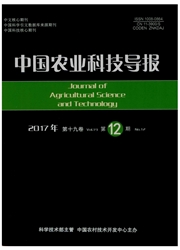

 中文摘要:
中文摘要:
根系的主要生理学功能是在土壤中探寻并获取所需要的物质,以维持植物的正常生长与发育。根系形态的建成通常能够随着土壤环境的变化而做出适应性调整,以利于其竞争土壤中的养分、水分等。阐述了L-谷氨酸(L-Glu)在高等植物氮代谢过程中的核心作用位置、在植物体内外环境中浓度变化状况,以及其作为生物信号分子有着远古的进化起源等。综述了近期所发现的关于外源L-Glu调控根系生长发育的生物学特征,并讨论了L-Glu调控根系生长与形态结构的可能性分子遗传学机理,这对认识植物有效竞争土壤中的有机(氮源)营养具有重要的生态学和农学意义。
 英文摘要:
英文摘要:
The main physiological function of root system is to explore soils and acquire substances needed for plant optimal growth and development.In order to competitively capture soil nutrients and water,the root system could adjust its architecture formation to adapt to the soil environmental changes.This paper expounds the centre role of L-glutamate(L-Glu or Glu) in plant nitrogen metabolism,the concentration changes in plant external and internal environments and the ancient evolutionary origin of Glu-signaling.The biological characteristics of root growth and development regulated by Glu are summarized,and the possible molecular genetics mechanisms of L-Glu regulation on root growth and formulation are discussed.This has important ecological and agricultural significance for understanding how the plant competitively captures organic nutrients from the soil effectively.
 同期刊论文项目
同期刊论文项目
 同项目期刊论文
同项目期刊论文
 期刊信息
期刊信息
